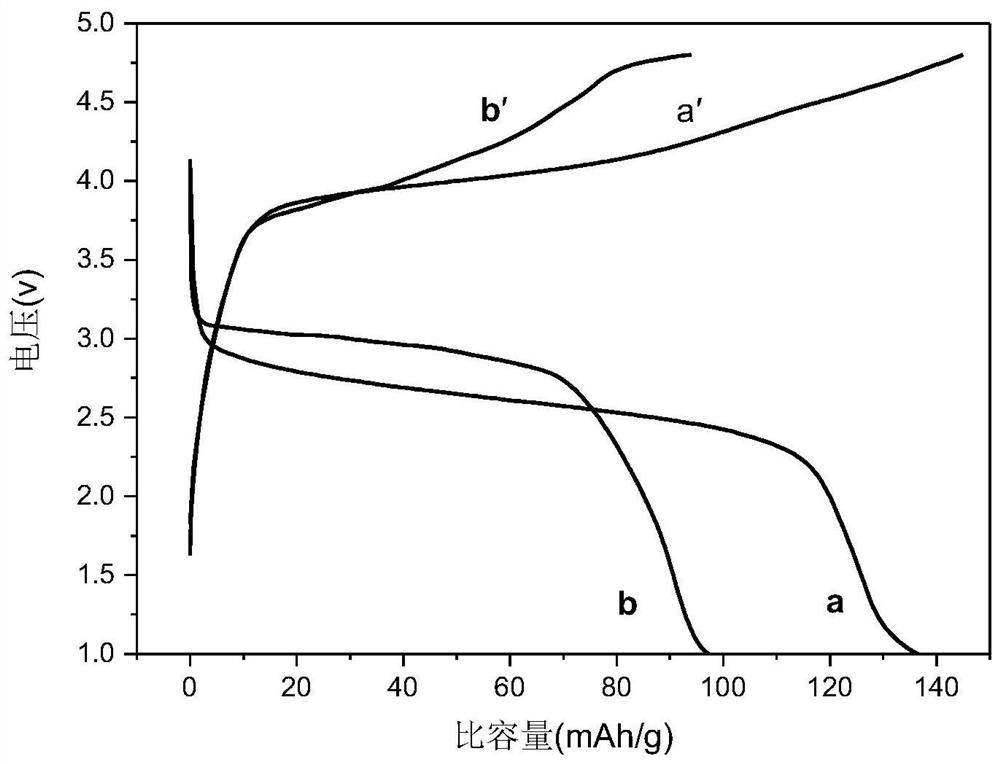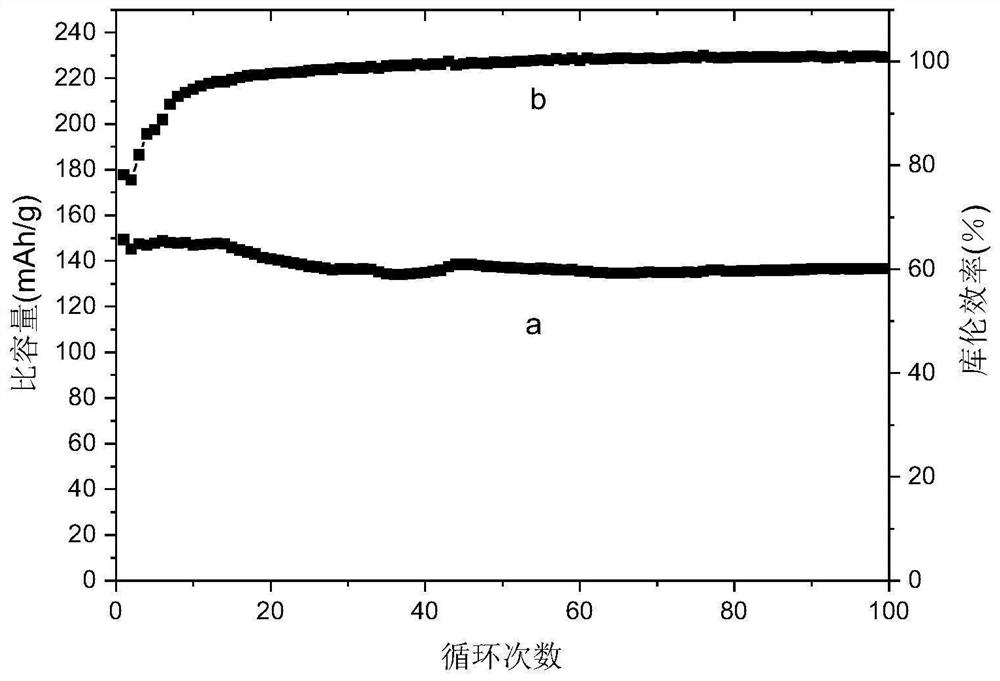Polymer electrolyte based on ionic liquid and preparation method and application thereof
A technology of ionic liquid and polymer, which is applied in the direction of solid electrolyte, electrolyte battery manufacturing, non-aqueous electrolyte, etc., can solve environmental damage and other problems, and achieve the effects of strong solid-state performance, high safety performance, and high solid-state performance
- Summary
- Abstract
- Description
- Claims
- Application Information
AI Technical Summary
Problems solved by technology
Method used
Image
Examples
Embodiment 1
[0044] A preparation method of an ionic liquid-based polymer electrolyte and a solid-state battery:
[0045] 1. Preparation of lithium lanthanum titanyl oxide (LLTO)
[0046] First weigh 1g lithium nitrate (LiNO3) and 6g lanthanum nitrate hexahydrate (LaNO3) 3 ·6H 2 (0), after it is packed into a beaker, dissolve with 10g absolute ethanol to obtain solution 1.
[0047] Then take another beaker, weigh 6g of tetrabutyl titanate and 2g of acetylacetone, and stir at 600r / min for 0.5h to obtain solution 2.
[0048] Solution 1 and solution 2 were mixed, and the mixed solution was stirred for 1 h.
[0049] The yellow solution obtained after the stirring was completed was dried in a blast drying oven at 70 degrees Celsius for 5 days, and then dried in a vacuum drying oven at 70 degrees Celsius for 24 hours to obtain a khaki xerogel.
[0050] The xerogel was put into a covered crucible and calcined at 900 °C for 2 h to obtain LLTO as a white powder.
[0051] The obtained white pow...
Embodiment 2
[0084] A preparation method of an ionic liquid-based polymer electrolyte and a solid-state battery:
[0085] Other experimental conditions are the same as in Example 1, and the difference from Example 1 is that in the preparation process of the polymer electrolyte in step 3, 0.2231g of nano-scale SiO is weighed 2 0.2231g of lithium lanthanum titanyl oxide (LLTO) and 0.1g of azobisisobutyronitrile (AIBN) were put into a 5ml glass bottle. Then add 0.3346g lithium salt LiTFSi and 0.35g ionic liquid [Py14]NTf2. The battery impedance test results are as follows figure 2 As shown, the ionic conductivity results are shown in Table 2.
Embodiment 3
[0087] A preparation method of an ionic liquid-based polymer electrolyte and a solid-state battery:
[0088] Other experimental conditions are the same as in Example 1, and the difference from Example 1 is that in the preparation process of the polymer electrolyte in step 3, 0.2071g of nano-scale SiO is weighed 2 , 0.1036g of lithium lanthanum titanyl oxide (LLTO) and 0.1g of azobisisobutyronitrile (AIBN) were put into a 0.5ml glass bottle. Then add 0.3107g lithium salt LiTFSi and 0.35g ionic liquid [Py14]NTf2. The battery impedance test results are as follows figure 2 As shown, the ionic conductivity results are shown in Table 2.
PUM
| Property | Measurement | Unit |
|---|---|---|
| electrical conductivity | aaaaa | aaaaa |
| electrical conductivity | aaaaa | aaaaa |
| electrical conductivity | aaaaa | aaaaa |
Abstract
Description
Claims
Application Information
 Login to View More
Login to View More - R&D
- Intellectual Property
- Life Sciences
- Materials
- Tech Scout
- Unparalleled Data Quality
- Higher Quality Content
- 60% Fewer Hallucinations
Browse by: Latest US Patents, China's latest patents, Technical Efficacy Thesaurus, Application Domain, Technology Topic, Popular Technical Reports.
© 2025 PatSnap. All rights reserved.Legal|Privacy policy|Modern Slavery Act Transparency Statement|Sitemap|About US| Contact US: help@patsnap.com



